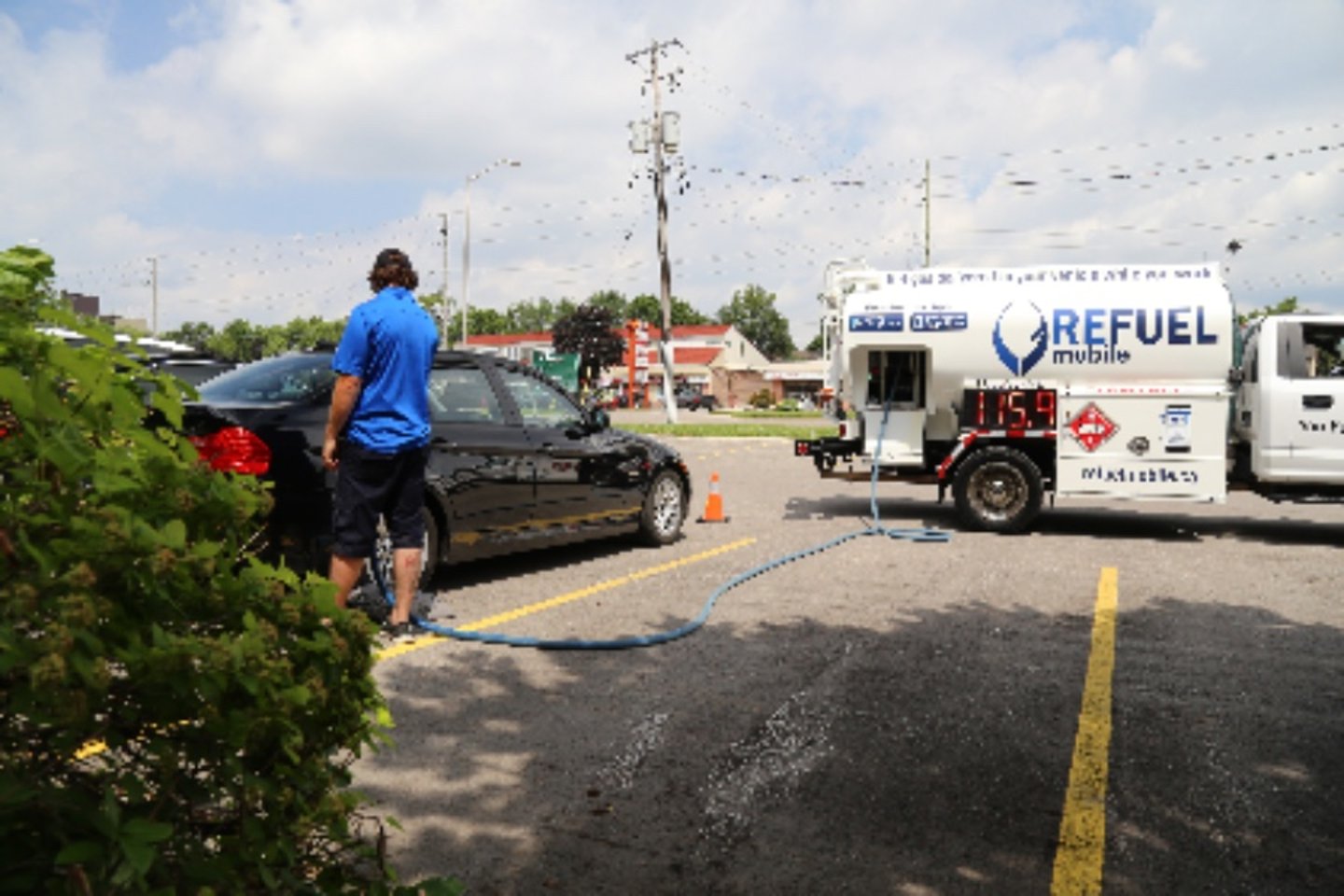Mobile fuelling start-ups aim to sidestep gas stations
When drivers need gas and diesel for cars and trucks, there’s an app for that. New digital tools allow fuel sellers to get involved with an evolving delivery platform that removes the need for gas stations. Customers access an app, indicate they need fuel, identify the location of their vehicle and let the magic happen. Fuel trucks pull up to driveways, street-side and parking lots to fill tanks to keep motorists motoring.
This new service for motorists (old news for fleet and construction vehicle owners) is a growing opportunity in some quarters. Globally there are now 44 companies involved in delivering gasoline directly to vehicles. Here in Canada, this service falls to around half a dozen start-ups located in the GTA, Atlantic region, Alberta and British Columbia.
The idea is all about convenience. “Delivered gasoline is typically the same price as at the pump or a little cheaper,” says, Mo Daouk, VP sales & marketing with ReFuel Mobile, a southern Ontario company based in London that is readying expansion plans for a national rollout this year. They launched in 2018, offering service to car dealerships and companies with fleet vehicles. “Our vision is to create a service where drivers no longer have to think about gas for their cars. The trip to the gas station is a thing of the past because, with ReFuel Mobile, the gas comes to you.”
ReFuel Mobile works when customers access a dedicated app and indicate they need gas. The location services on Smartphones allow the app to drop a pin to your exact location. Customers merely open their gas caps and go about their business. ReFuel does the heavy lifting and dispatches a truck and driver to a car's location where the vehicle's tank is filled, a receipt is generated, and everyone lives happily ever after.
“Awareness of this service is the industry’s greatest challenge right now,” says Daouk, adding that they have achieved a 25% uptick in consumer trade in addition to their deliveries to car dealers, businesses and employers.
Innovative is their MyTank program for home-based fuel use for lawn tractors and garden equipment. This program has trucks deliver to solar-powered tanks on customers’ properties, making jerry cans and repeat trips to neighbourhood gas bars unnecessary. “Refuel Mobile is also useful for boat and RVs,” he says.
In Montreal, Ryan Chadwick-Chabot and George Batkis have started Fuel It Mobile Refueling, a company they believe offers the innovation traditional gas station sites lack. Fuel It operates one 2000-litre truck now and has three larger vehicles on order. Fuel It utilizes a dedicated app, Fuel It Canada, that makes it easy to get a fill at home, the office or even in the parking lot of the shopping mall. The company also offers an overnight delivery that is their most popular service so far. They also have an emergency service option that guarantees that they arrive at your site within the hour.
According to Fuel It Mobile Refuellng CEO Ryan Chadwick-Chabot, one of the initial challenges was with permits and meeting regulations. “Regulators think about gas stations when you talk about vehicle fuelling. We have had to have a number of conversations to get things moving in the right direction,” he says, mentioning that there were limits initially on how much gasoline or diesel their truck could carry. Now, after by-law and fire officials better understand the value of his service, Fuel It trucks can haul much larger capacity, a factor in keeping costs to motorists low. “People pay a $1.00 monthly membership, and we have been selling at the average pump price for the region. This low cost is helping us build a customer base,” he says.
When it comes to the regulatory environment, mobile fuelling has had a few challenges. In the U.S., locations such as San Francisco and Washington State set up red flags about the service in the early days. Back in 2016, the San Francisco Fire Service told media fuel delivery services were not permitted under the current scope of the regulations. Fear was that delivery trucks could catch fire in underground parking garages as well as other factors. However, with the onset of several companies moving into the market, the Fire Service began writing municipal codes to address the new delivery model.
In Seattle, the Fire Department issued a Stop Work Order to Filld, a California-based major player in the US mobile fuels delivery market. At issue was on-street fuelling, a service the Fire Marshall saw as something that required more regulations. Filld was unable to negotiate street-side Fuelling in Seattle and decided to vacate the market, something that they have just announced for Canada. Filld had been partnering with Calgary’s Parkland and had great hopes for markets such as Vancouver. “Filld has just altered its business model slightly, prompting the decision to leave Canada,” says Ward Supplee, VP, business development, Filld Inc.
Among the reasons that mobile fuelling is challenging for new entrants is the lack of clarity in the regulatory environment. Calls from OCTANE to major city fire departments typically received quizzical responses and Transport Canada suggested responsibility lies with the provinces. Calls and e-mails to provincial Departments of Transport revealed no specific regulations or knowledge of the remote fuelling sector beyond Canadian Automobile Association programs or fleet services.
“At this point, the lack of familiarity with the service is a challenge,” concludes Mo Daouk. “However, as we build a larger customer base and this business concept moves across the country, the convenience of mobile fuel delivery will become more commonplace and accepted as a normal practice. As we move away from the start-up phase, regulations and procedures will standardize. Expect mobile fuelling to become much more common in future.”

